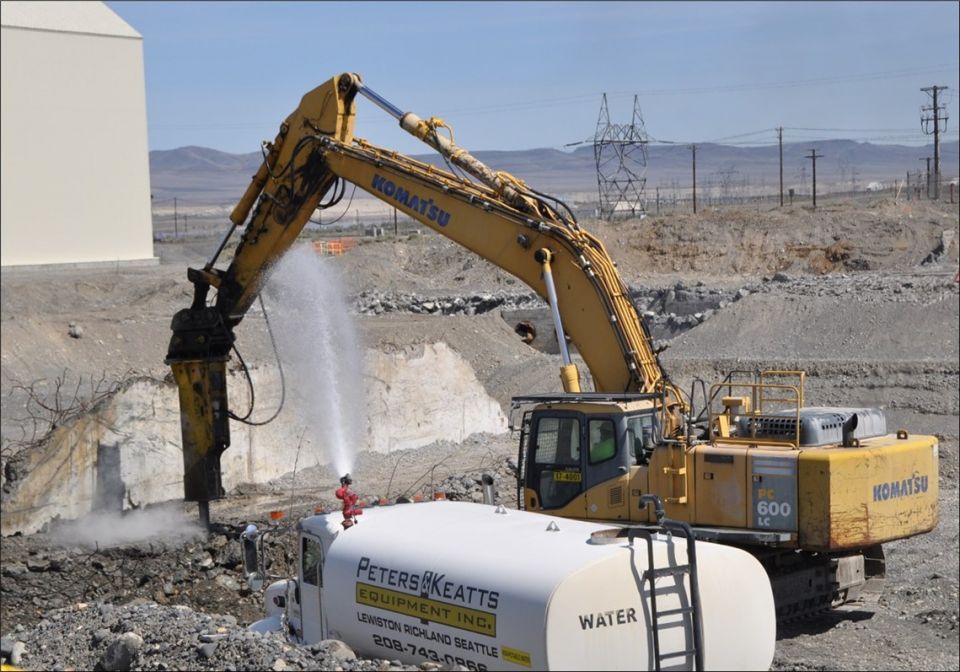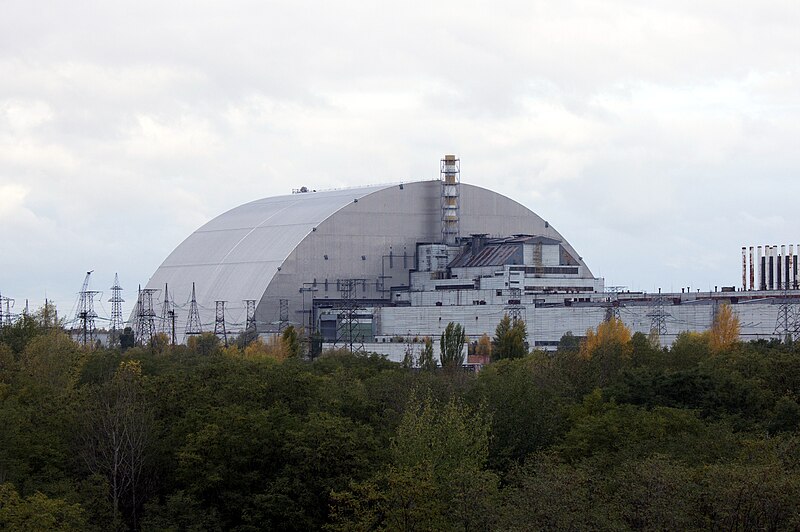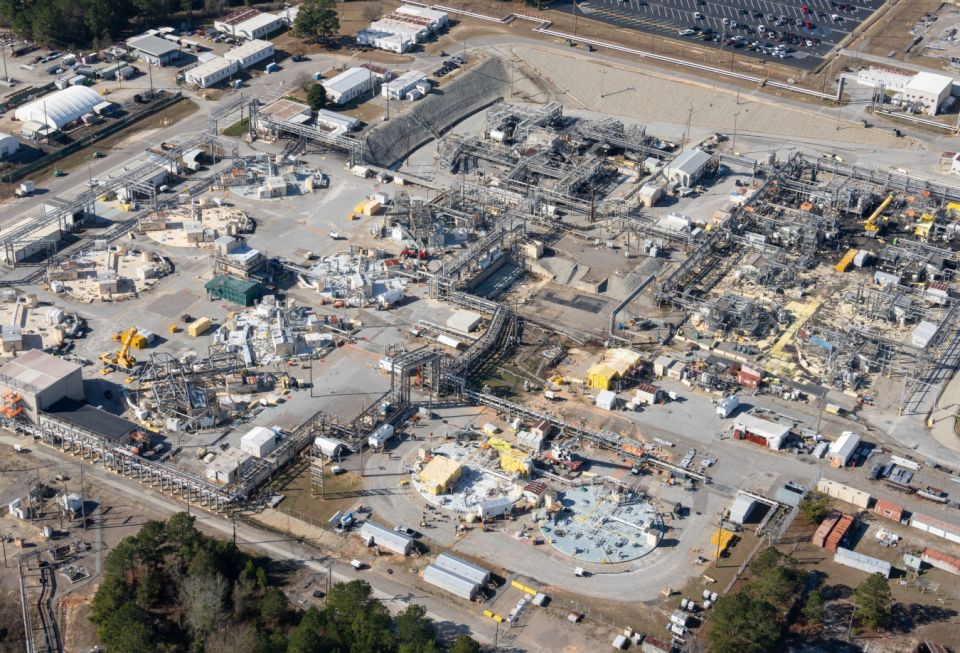New EPA Guidelines for Response to Radioactivity Releases
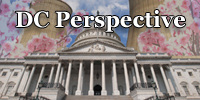
The U.S. Environmental Protection Agency just released a draft Protective Action Guideline (PAG) that sets standards and makes recommendations for the response to a large release of radioactive material into the environment (e.g., from a nuclear plant accident or a dirty bomb attack, etc.). The draft report is now out for public comments (which are due by July 15).
PAG recommendations
The PAG sets a public dose threshold of 2,000 mrem in the first year and 500 mrem in subsequent years, above which the areas in question should be evacuated. (See Table 1-1 of the PAG.) The PAG is not clear as to whether or not those same limits apply to resettlement of areas previously evacuated (i.e., if people can resettle areas after their exposure levels drop back below 500 mrem/yr). Section 3.8 of the PAG suggests that "re-entry" is allowed if annual exposure is kept under 500 mrem, but appears to say that this is only for temporary stays (to accomplish specific tasks). It's unclear why permanent residence (resettling) would not therefore be permitted if full (annual) occupancy would not yield a dose over 500 mrem.
Apparently, the above evacuation guidelines (thresholds) are no different from the current guidelines, which were based on a 1992 PAG. The differences lie in the area of long-term cleanup standards, and (perhaps) standards for resettlement or reuse. Currently, the only guidance or precedent for such standards are the extremely strict standards that apply for EPA Superfund sites and nuclear plant decommissioning, which are based on allowable lifetime cancer incidences (for a hypothetical, most exposed individual) ranging from 10-4 to 10-6. For radiation, these standards led to dose rate limits as low as 10-25 mrem/year (i.e., far below natural background levels).
The new PAG does not appear to give any specific, recommended dose thresholds for long-term cleanup. In Section 4.1.3, it makes reference to the old 10-4 to 10-6 acceptable lifetime risk criteria, but goes on to suggest that in the case of a large scale release of radioactivity (e.g., following a severe plant accident), attaining such cleanup goals may be impractical. It then states that cleanup level (and perhaps resettlement) decisions should be made on a case-by-case basis, with inputs from local authorities and various other stakeholders, based on the principle of "maximizing overall human welfare". In Section 4.1.4, it suggests that resettlement may be possible before the long-term cleanup goals are met, due to the fact that those goals will be met in subsequent years, resulting in acceptable lifetime exposures.
Whereas the EPA PAG does not give specific dose numbers for cleanup standards/goals, a related National Council on Radiation Protection report does talk about such values. It discussed possibly raising the allowable dose rates (for resettlement, and possibly long-term cleanup goals) to anywhere from 100-2,000 mrem/yr. That is in contrast to the existing EPA standards for nuclear plant decommissioning, which are on the order of 10-25 mrem/yr (and are based on a constant lifetime dose at those levels, and an acceptable lifetime cancer risk of 10-4 to 10-6). It did, however, go on to recommend continued cleanup efforts, even after the attainment of the (100-2,000 mrem) annual dose goal, and subsequent resettlement.
Political reaction
The EPA PAG and NCRP report have provoked a strong reaction from anti-nuclear groups, who characterize them as an enormous relaxation of radiation standards (i.e., a huge increase in allowable dose rates). In a New York Times article, however, the authors of the PAG and NCRP report insisted that they are not changing the cleanup standards or allowable dose, but are just using more accurate estimates of lifetime doses that people will receive, based on the Fukushima experience, and expected cleanup activities that will continue to occur.
I'm not entirely sure what they mean by more accurately calculating doses, when the subject is the setting of dose limits. I think that the authors are referring to what was discussed in Section 4.1.4 of the EPA PAG, where people can resettle in areas with a somewhat higher annual dose rate, while still "meeting" the old lifetime cancer risk criteria, due to an assumption that dose rates will fall off, significantly, due to decay, natural dispersion, and ongoing cleanup efforts.
Changes do not go far enough
All of these (EPA/NRC) policies and supporting analyses are based on the linear no-threshold (LNT) assumption, i.e., that cancer risk is directly proportional to radiation dose, for doses all the way down to zero. Many scientists outright disagree with this, and even most of those who do support LNT don't really believe that the risk is truly linear, all the way down to extremely low doses (that are a small fraction of natural background). They just believe that it is a practical and conservative radiation protection policy, and that there is no better practical alternative.
It's obvious that anyone who does not believe the LNT assumption, and believes that dose rates within the range of natural background have no health impact, will find these EPA/NRC policies to be completely absurd. I will not question or debate LNT here, however. For the reasons I discuss below, current policies-and even those suggested by the PAG-are clearly unwise, indefensible, and utterly hypocritical, even if one completely accepts LNT.
Man-made vs. natural radiation dose
My position has always been that the issue is not LNT per se, but the fact that it is selectively applied/enforced. While LNT is debatable, there is no debate among experts that a given dose has the same health impact, whether it comes from a natural or man-made source (or isotope). And yet, there is a complete black-and-white distinction between naturally caused doses and man-made doses (specifically, those from the nuclear power or weapons industries), in terms of dose limits. Government agencies assume LNT, and then apply an extremely low (and arbitrary) allowable cancer risk criterion, to arrive at extremely low allowable radiation doses. They then apply those low limits ONLY to nuclear-industry-related activities (and isotopes). Doses from natural and other sources that are orders of magnitude larger are not regulated or responded to.
How could it be that government agencies are saying that "contaminated areas" should remain off limits, and require expensive cleanup efforts, even though the overall exposure levels in those areas are lower than the natural background exposure levels in many regions of the earth (where millions currently live, with no apparent health impacts)? Under that logic, we should be spending billions to reduce doses in high natural background dose areas (e.g., Denver), or permanently evacuate those areas.
Those natural sources are responsible for annual collective exposures that are thousands of times higher than those caused by even worst-case accidents like Fukushima, let alone the nuclear industry in general. Even the individual exposures are orders of magnitude larger than those that would be allowed by the 10-4 to 10-6 lifetime risk criterion (radon exposes hundreds of millions of Americans to a lifetime cancer risk on the order of ~1%). Many of those natural doses (such as radon) would also be orders of magnitude less expensive to reduce (in terms of dollars per man-Rem avoided).
For these reasons, annual dose limits that are a small fraction of natural background, which only apply to nuclear-industry-related sources, are clearly indefensible. The policy solution to this is obvious. Government agencies need to be told that they are no longer allowed to apply policies or regulations that distinguish in any way between different sources of radiation (e.g., natural vs. man-made, etc.). Dose is dose, period. They need to establish what safe dose levels are, regardless of source, for normal (long-term) and accident/event (short-term) conditions. The only possible exception to that may be medical exposures, under the argument that they have an offsetting health benefit.
I can possibly understand the desire to set very low exposure limits (far below the level that poses any significant health risk) for normal nuclear industry operations, based on a "good industrial practice" philosophy. Routine releases really are unnecessary and easy to avoid, and we may want to avoid long-term buildup of man-made isotopes in the environment. However, unless the above reasoning is not clearly explained to the public, such policies may be counter-productive. The public will (understandably) tend to think that doses above the limits represent a significant health threat. In the event of an accident, the government will have to apply much higher limits, and then will have to explain that those higher doses are not really a significant health threat. This will result in a loss of public trust. A better stance would be to establish higher "public health and safety" dose rate limits around the top of the natural range (i.e., on the order of a Rem/year), but then say that much lower limits will be applied for normal operations since there simply is no reason why any significant releases are necessary, or should be allowed.
Cost vs. benefit
These extremely strict dose limits are yet another example of society spending enormous sums of money to reduce or eliminate tiny risks in one area, while ignoring vastly larger, and cheaper to reduce, sources of risk in other areas. This may be true of the (chemical toxin) EPA Superfund cleanup requirements, as well as the nuclear-related requirements.
The PAG and NCRP reports, and their authors, discuss the 10-4 to 10-6 "acceptable" lifetime cancer risk criteria, and how they will be maintained. To me, something seems odd about such stringent requirements in a world where ~25 percent of the people die of cancer. Clearly, there are much larger sources of risk that these regulatory bodies are failing to protect us against. That is, there are many industries or aspects of life where these strict risk standards are clearly NOT being applied. (Automobile exhaust, coal plant emissions, and the fact that coal ash is still not classified as a toxic material comes to mind.) It seems clear that this is yet another case of selective application/enforcement of overly strict requirements; another double standard.
My understanding is that the government has general public safety policies (for industrial projects/activities, building codes, etc.) that require that ~5-10 million dollars be spent per (expected) life saved. These same policies should apply for the cleanup and resettlement of nuclear-contaminated areas. At some point (dose level), the cost of continued cleanup up effort will exceed $5-10 million per life saved (even assuming LNT). At that point, cleanup efforts should stop.
This is especially true given that there are many ways to save lives that cost far less than $5-10 million per life saved. According to this article, the EPA's proposed soot rule would only cost ~$5,000 per life saved. Also, according to my calculations, radon abatement (in a large fraction of U.S. homes) would cost only ~$100,000 per life saved (again, if you believe LNT).
Collective exposure vs. maximum individual risk
If one believes that there is a dose threshold (below which no health impacts occur), it may be logical to establish limits on dose rate (or annual dose) for individuals that are near that threshold. However, if one truly believes in LNT, limits on individual exposure have no logical basis. A simple mathematical result of the assumption that health risk scales linearly with dose is that the total health impact (i.e., numbers of sicknesses or deaths) scales directly with the collective exposure (in man-Rem). At the end of the day, the number of cancers is all that matters. Individual risk, and whether or not it is "acceptable", is almost meaningless. Each person either gets cancer or not, and only the number of cancers matters.
Current limits invoke LNT (as they are far below the levels at which any health impacts are seen), but then establish extremely low limits on maximum individual risk (i.e., 10-4 to 10-6), as opposed to limits on collective exposure (in man-Rem). The way these current limits work, spreading the risk (pollution) out (e.g., tall smoke stacks) helps one comply with the limits, even though LNT (the very basis of those low limits) holds that spreading the risk out does not reduce the impact at all. It's fallacies like this that make it possible for extremely low dose limits to apply for localized decommissioning or Superfund sites, that are having negligible impact, while fossil fuel air pollution (cars and coal plants) are causing tens of thousands of deaths every single year.
If LNT is to be the basis, correct policy would be to place limits on collective exposure, for any given industrial activity. For cleanup operations (or pollution prevention for that matter), a certain amount of money per man-Rem avoided should be required. Such policies would direct attention away from localized sites and towards more widespread pollutants that are actually having far larger health impacts. One thing is clear; these extremely low (10-4 to 10-6) limits on maximally-exposed individual dose have no logical basis and are completely indefensible.
Call to action
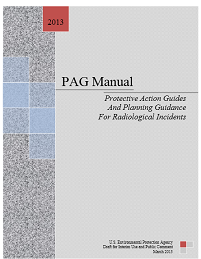 The draft EPA PAG is open for public comment until July 15. I urge American Nuclear Society members to respond. My personal view is that expensive cleanup operations or not allowing resettlement in areas with annual doses within the natural range (i.e., under ~1,000 mrem/year) is neither rational nor defensible. It wastes limited resources on a small to negligible public health benefit, and it inflicts needless suffering on the local population.
The draft EPA PAG is open for public comment until July 15. I urge American Nuclear Society members to respond. My personal view is that expensive cleanup operations or not allowing resettlement in areas with annual doses within the natural range (i.e., under ~1,000 mrem/year) is neither rational nor defensible. It wastes limited resources on a small to negligible public health benefit, and it inflicts needless suffering on the local population.
________________________

Hopf
Jim Hopf is a senior nuclear engineer with more than 20 years of experience in shielding and criticality analysis and design for spent fuel dry storage and transportation systems. He has been involved in nuclear advocacy for 10+ years, and is a member of the ANS Public Information Committee. He is a regular contributor to the ANS Nuclear Cafe.







